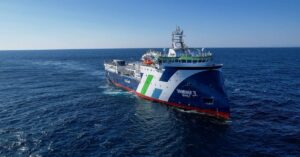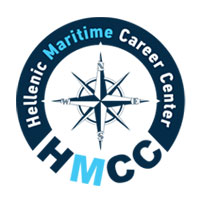
Former U.S. Navy Admiral & 2 Business Executives Arrested For Bribery
June 4, 2024
Germany’s River Rhine Closed To Cargo Shipping After Heavy Rain
June 4, 2024

On May 31, South Korea marked a crucial milestone in marine research by commissioning its first domestically built geophysical exploration research vessel, Tamhae 3, during a ceremony at Pohang Yeongilman Port.
This cutting-edge vessel, owned by the Korea Institute of Geoscience and Mineral Resources (KIGAM) and built by HJ Shipbuilding & Construction (HJSC), represents a significant step forward in the country’s geophysical exploration capabilities.
Tamhae 3, which costs KRW 181 billion (US$132 million), will replace its predecessor, Tamhae 2, built in 1996.
The 92-meter vessel will conduct geophysical research beginning with Korea’s continental shelves and extending to the polar regions.
Ulstein Design & Solutions AS designed the vessel, which was built at HJSC’s Yeongdo Shipyard.
It weighs 6,000 metric tons and is outfitted with 35 different types of advanced research equipment.
The new build has an ice-class hull, a dynamic positioning system, noise control mechanisms, and an auto-navigation system, allowing it to conduct extensive geophysical research in various marine conditions, including polar regions and continental shelves.

It can launch up to eight seismic streamers, each up to 6 kilometres long, and has bottom seismic exploration and high-resolution 4D monitoring capabilities.
Tamhae 3 can carry 50 crew members and travel up to 36,000 kilometres at 15 knots (28 kilometres per hour), allowing it to reach both poles.
During the commissioning ceremony, South Korean Trade, Industry, and Energy Vice Minister Namho Choe highlighted the vessel’s role in ensuring resource security, improving public safety, and reaching carbon neutrality.
He emphasised that the effective use of Tamhae 3 would substantially contribute to these national objectives.
Tamhae 3 is classified as KRS1, SPS, Seismic Survey, LI-HG-S2, UMA, ICE!B, BWT, DPS(2), Clean3, NBS1, NVH_N2, NVH-V3, IWS, and STCM, indicating that it satisfies the highest research and exploration criteria.
Tamhae 3’s commissioning signifies a significant step forward in South Korea’s maritime geophysical research capabilities, promising advances in the analysis of marine energy resources and fault inspections, and an increase in the country’s involvement in worldwide scientific exploration endeavors.
Reference: Marine Technology news
South Korea Commission’s First Domestically Built Geophysical Exploration Research Vessel appeared first on Marine Insight – The Maritime Industry Guide
Source: Maritime Shipping News


